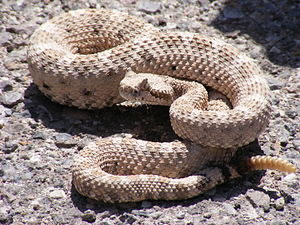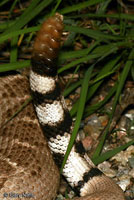

Animal Facts - Rattlesnakes
If you have any interesting or funny facts about animals or would like to find out more information about a particular animal, please fill up the Feedback form and we will be happy to add it to our list of animal facts.
In this page, we will look at the Rattlesnakes.
What makes a rattlesnake’s tail rattle?
Several days after a rattlesnake baby is born, it sheds its skin for the first time and a button is left on the end of its tail. Each time the rattler sheds its skin—which happens every three or four months—another hollow rattle segment is added to its tail. When the snake shakes its tail, the contraction of special "shaker" muscles in the tail causes these segments to vibrate against one another, making the rattling noise (which is amplified because the segments are hollow). The longer the rattle, the louder the noise. A wild rattlesnake will usually have no more than eight or nine segments because they get brittle and break off.
The most widely accepted hypothesis for the rattle is that the rattle is a warning device for predatory animals that might be a threat to the rattlesnake. It produces a signal to drive them away


Try out our new and fun Fraction Concoction Game.
Add and subtract fractions to make exciting fraction concoctions following a recipe. There are four levels of difficulty: Easy, medium, hard and insane. Practice the basics of fraction addition and subtraction or challenge yourself with the insane level.



We welcome your feedback, comments and questions about this site or page. Please submit your feedback or enquiries via our Feedback page.